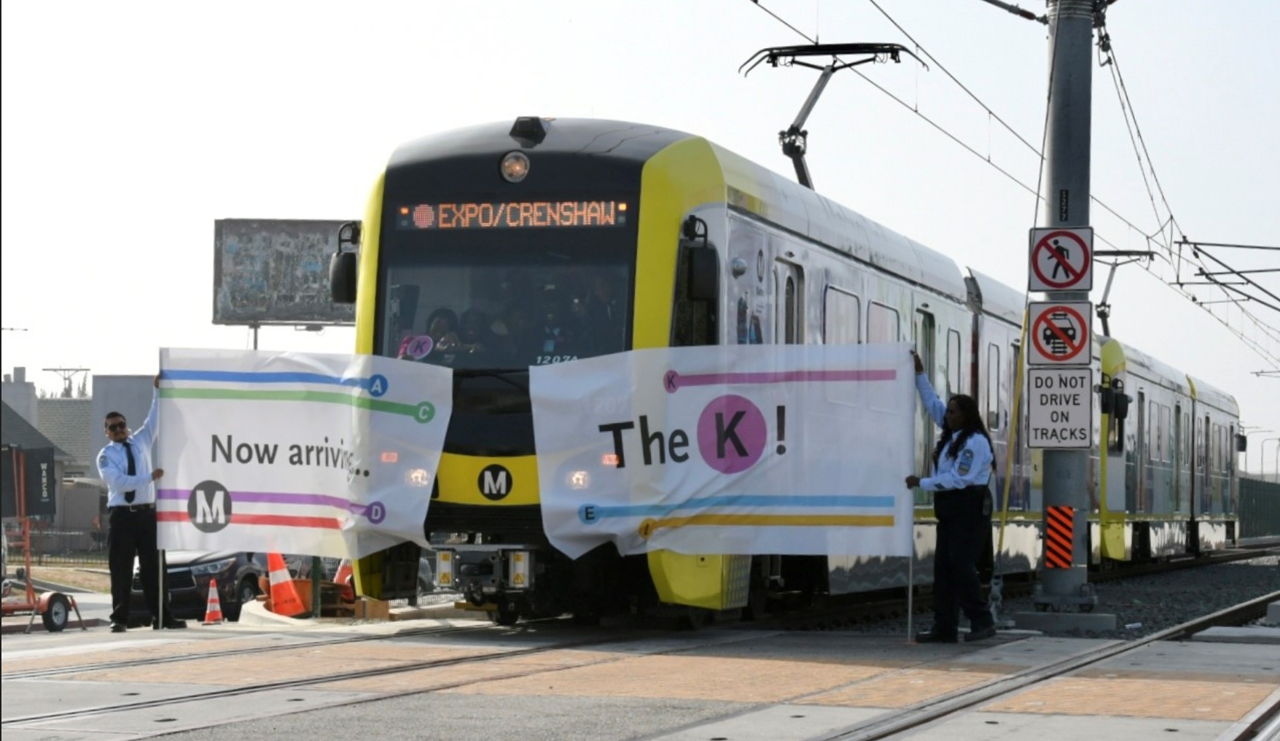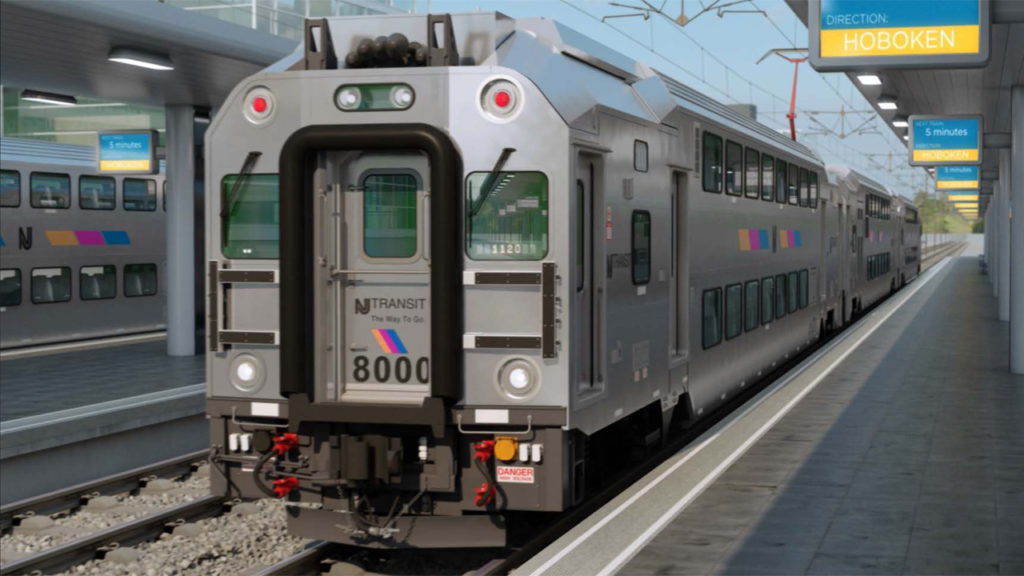
Transit Briefs: APTA, LACMTA, NJ Transit
Written by Marybeth Luczak, Executive Editor
LACMTA officials on Oct. 7 commemorated the grand opening of the K Line, Los Angeles’ newest light rail line. (Photograph Courtesy of LACMTA)
The American Public Transportation Association (APTA) has released a new report on the “Transit Workforce Shortage: Root Causes, Potential Solutions, and the Road Ahead.” Also, Los Angeles County Metropolitan Transportation Authority (LACMTA) officially opened the K Line, formerly known as the Crenshaw/LAX Line, on Oct. 7; and New Jersey Transit will replace the windows in 429 multi-level commuter railcars.
APTA has issued a new report (above) to help the public transportation industry better understand the causes of today’s workforce shortage, and provide best practices for recruiting, hiring and retaining transit operations workers. It not only outlines the nature and severity of the transit workforce shortage, the association said, but also highlights what agencies and the industry can do to deal with the issue by combining background research and the results of public transit agency surveys. Foursquare ITP, in association with EBP, prepared the report for APTA.
“96% of agencies surveyed reported experiencing a workforce shortage, 84% of which said the shortage is affecting their ability to provide service,” according to the Transit Workforce Shortage: Root Causes, Potential Solutions, and the Road Ahead report. “Although the shortage is most acute at agencies serving large urbanized areas and agencies with greater ridership, most agencies across the country report the shortage has forced service reductions regardless of the size of an agency’s ridership, service area population or fleet.”
To begin easing the workforce shortage in the short term, and to build a more resilient workforce development program in the long term, the report found agencies should work to increase compensation, improve worker schedules, create a positive work environment, demonstrate a clear path to promotions or raises, ensure worker safety, provide ongoing training, and increase hiring and recruiting practice effectiveness.
The report is Phase 1 in APTA’s research efforts surrounding workforce shortage issue. “Gaps identified in the knowledge of the ongoing workforce shortage will be filled in Phase 2 through agency case studies and frontline worker surveys,” the association said.
“Like almost every industry, public transportation is facing a severe shortage of skilled workers, hindering our ability to best serve our communities,” APTA President and CEO Paul P. Skoutelas said. “This shortage is complex, multifaceted, and connected to changes in the broader culture and economy. This workforce shortage is the confluence of multiple factors and successfully responding to it will involve a comprehensive approach.”
The Oct. 7 launch of LACMTA’s K Line marked the official return of rail service on Crenshaw Boulevard. The last Los Angeles Railway Line 5 yellow streetcars ran in 1955, according to the transit agency. The $2.1 billion line, whose opening was announced last month, is expected to provide new access to opportunity for numerous south Los Angeles communities, including the Crenshaw Corridor, Hyde Park, Leimert Park, Fairview Heights, Inglewood and Westchester, by connecting these communities with new local destinations as well as the rest of Los Angeles County’s expanding Metro Rail system. More than 32,000 daily boardings are anticipated by 2035.
The K Line’s first seven stations—Expo/Crenshaw, Martin L. King Jr., Leimert Park, Hyde Park, Fairview Heights, Downtown Inglewood and Westchester/Veterans—are operational. According to LACMTA, the Aviation/Century station is projected to open in late 2023, along with a rail connection to the C (Green) Line. The LAX (Los Angeles International Airport)/Metro Transit Center Station along the new K Line tracks, now under construction, is planned to open in late 2024, offering transfers between LACMTA and the LAX Automated People Mover.
The transit agency said it plans to expand the K Line north. It is developing a draft environmental impact report that will explore alternatives for extending the K Line to reach Hollywood. A draft report release is planned for 2023.
“After decades of going without rail transit, I’m proud to lead Metro [LACMTA] as it delivers the K Line to Crenshaw, Inglewood, and all the other south Los Angeles communities.” LACMTA CEO Stephanie Wiggins said. “We’re eternally grateful to the area’s residents and businesses for hosting us in the community during a long and technically complex construction period. I know the K Line will be well used and well loved by these communities and the rest of Los Angeles County for decades to come.”

NJ Transit is slated to spend $8 million, plus labor, to replace the “cloudy” windows on 429 of its multi-level commuter railcars, according to NJ.com.
The issue, affecting both generations of the agency’s multi-level cars, “is caused by exposure to elements such as acid rain, heat, and ultra violet rays over the course of time, and other factors,” spokesman Jim Smith told the news outlet.
“Passengers and advocates have complained on social media about not being able to see out of train car windows, ranging from complaints about not being able to see the scenery on some of the more scenic rail lines to not being able to see what station they’ve arrived at,” NJ.com reported. Not only has the agency tried hand washing cars and windows, it “‘tried various types of restoration processes to no success at this point,’ Smith said. ‘We have also included different manufacturers of the windows to research if there is a process, and currently have not found a solution.’”
Smith said NJ Transit is “working expeditiously to establish the most efficient replacement program and schedule, so work can begin as soon as possible.”



